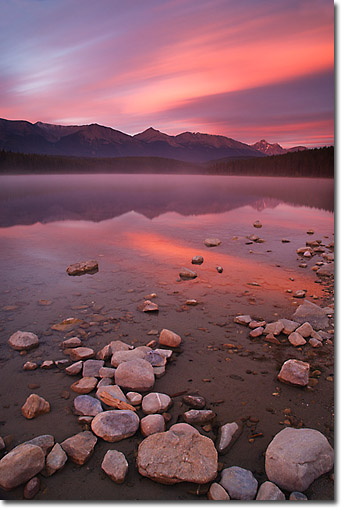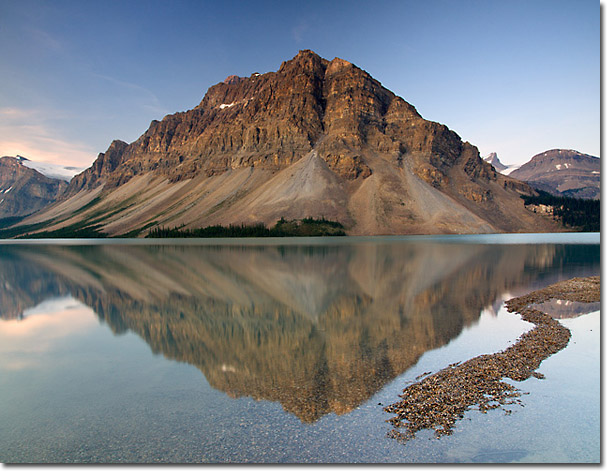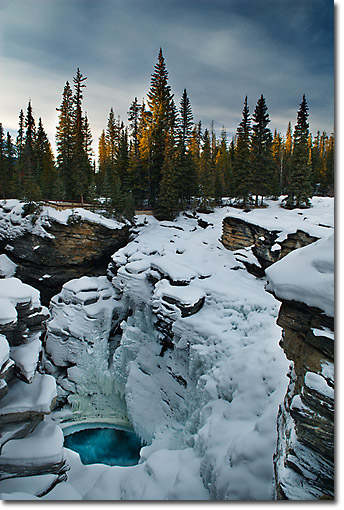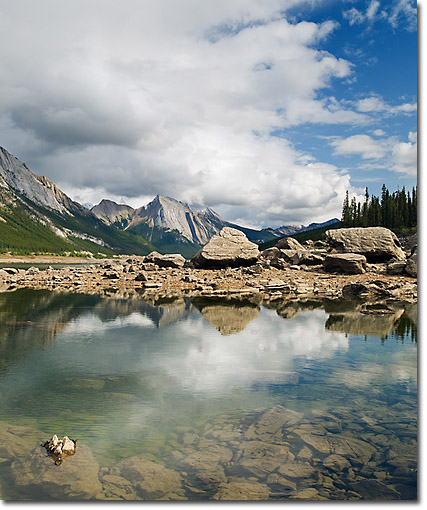Revisiting Icons |
"I am not interested in shooting new things—I am interested to see things new. - Ernst Haas
What is it about human nature that places a high priority on being first at something? And if you can’t be first, then being the best is also important. Of course, the first and the best would be the ultimate! No doubt such an attitude germinated in the pea-brain of our first ancestors who crawled from the primordial mud to the sandy shore and from there went from belly to all fours to feet. But is this way of thinking helpful to the photographer as artist?

Patricia Lake, Jasper National Park
I am thinking specifically in terms of photographing icons here. Again and again, I read tips in magazines and on websites on how to get fresh perspectives of over-shot scenes. Be different or be damned is the common thread. While these articles encourage us to see beyond the low-hanging fruit, there is a danger of creating superficial photography as a result of trying to be different solely for difference’s sake.
What’s the big deal, you think? We’re all tired of looking at the same tired, old images of tourist hot spots. Don’t get me wrong - diversity is good. Challenging yourself to work a scene beyond what you first see is a healthy part of artistic development - but this should be your work ethic every time you photograph, not just when you are trying to outdo others who have been there before you.

Mount Crowfoot, Bow Lake, Banff National Park
Lately, I have been reading a lot of books about photographers’ artistic vision and learning to see like a photographer. These books have got me thinking. They all state that to truly be a good photographer, you must shoot what moves you; your motivation for clicking the shutter is a magical elixir mixed from feelings generated by the rich data your senses are feeding you about a scene. Good photography requires honesty and bravery: you must be aware of what motivates you to click the shutter and brave enough to do so despite any perception that others may not agree with your image. Thus, approaching an icon with the need to be first or best with a new way of shooting the subject may be counterproductive if you are not responding with your honest voice.

Athabasca Falls, Jasper National Park
This is not just an academic exercise! I have stood with photographers visiting Canadian icons for the first time and heard them say things like, “Oh, I’m not going to shoot this because it is over-shot” or “There’s no point taking a picture of this as others have done it much better than I can.” I couldn’t believe my ears! Here we were, on a gorgeous morning in the mountains, and the person had blinkers on so huge an elephant couldn’t see around them. There is a reason why iconic scenes are so popular - it’s because they universally appeal to people. Beauty may be in the eye of the beholder, but the throngs who behold these landscapes consistently see beauty. They are inherently divine. Unless you are on assignment for someone else (where your choices are legitimately constrained by the employer), turning off your photographer’s eye to the majesty before you means you miss a great shoot and can hurt your artistic development. I think the best photographers are always giddy with the glory around them. They shoot a scene for how it makes them feel, not for what it will give them.

Medicine Lake, Jasper National Park
The way to come away with fresh images of icons is, perversely, to shoot them. - again and again and again. The point is to hone your ability to see and react to what is before you, whether it is an iconic scene or a never-before-seen. There is no other ‘you’. No other person will react in the same way to the same scene. The skill of a photographer is being able to translate what you see into a final image, and that takes honesty, bravery and practice.
Or you could shun iconic scenes, paint yourself as an adventurer, and seek easy trophies in rarely seen wild areas. With no one to compete with, you could at least call yourself first if not best. But then that would truly be taking home the low-hanging fruit.
Comments on NPN nature photography articles? Send them to the editor. NPN members may also log in and leave their comments below.
Samantha Chrysanthou was born in Lethbridge, Alberta. After moving for a period of time to northern Alberta, she returned in 2000 to southern Alberta to pursue a law degree in Calgary. After becoming a lawyer, Samantha began to realize her heart was more engaged in capturing the beauty of the landscape around her than debating the nuances of legal arguments in court. She has since left law to pursue writing and photography full-time. She particularly enjoys shooting the prairies, foothills and Rocky Mountains within an hour or so of her home in Cochrane, Alberta. Visit Samantha’s website to view more of her work at www.chrysalizz.smugmug.com.